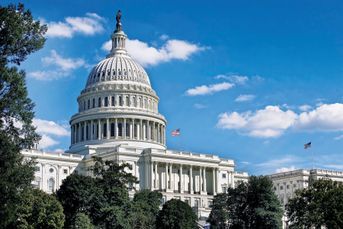Changes in money market oversight must be based on fact, not fiction
Money market mutual funds are one of the most liquid, transparent and heavily regulated financial instruments. They…
Money market mutual funds are one of the most liquid, transparent and heavily regulated financial instruments.
They also are one of the most important, as the $2.5 trillion held in these funds provides short-term financing for businesses, banks and governments at all levels.
Given this critical role, proposals for radical changes in the regulation of money market funds should be based in fact, not fiction. Unfortunately, the case being made for such changes in Washington falls well short of this mark.
Indeed, regulators tell a tale about money market funds in the financial crisis that is incomplete and misleading at best.
Turn to the 2012 annual report of the Financial Stability Oversight Council, a body of financial regulators established by the Dodd-Frank Act. The report maintains that changes for money market funds under consideration at the Securities and Exchange Commission are needed because “the structural features of money market funds … caused a run on prime money market funds and the freezing of the short-term credit markets after the Reserve Primary Fund was unable to maintain a stable net asset value in September 2008.”
This is a startling mischaracterization of that time of crisis and the role of money market funds in it.
The notion that money market funds caused short-term-credit markets to freeze conveniently ignores altogether the context of what Federal Reserve Board Chairman Ben S. Bernanke has described as “the worst financial crisis in global history, including the Great Depression.”
This crisis had reached a critical stage long before September 2008. At least 13 major institutions had gone bankrupt, been taken over or been rescued during the 12 months before Lehman Brothers Holdings Inc. was allowed to fail, triggering the Reserve Primary Fund’s problems.
DEPTH OF CONCERNS
One day after Lehman’s collapse, the government changed course and rescued American International Group Inc. Following these events, concerns spread rapidly in financial markets that the debt of numerous large investment and commercial banks posed a much greater risk than previously thought.
The depth of these concerns was reflected in the spread between the three-month London Interbank Offered Rate and the overnight index swap rate, a traditional measure of the health of the banking sector. The Libor-OIS spread jumped from less than 100 basis points Sept. 12, 2008, to nearly 370 basis points a month later, as banks stopped lending to one another.
If anything, the Libor-OIS spread may understate the pressures then prevailing in the banking system, based on reports that certain banks participating in the Libor survey were underreporting their funding costs.
In this maelstrom, investors everywhere reacted to the widespread uncertainty over the stability of financial institutions and the lack of predictable government policy responses to a crisis gripping the global banking system. The environment precipitated a general pullback by all participants in the money markets, including a wide range of investors who were significant sellers of commercial paper during this period.
Money market funds and their investors were neither the first nor the largest of those mounting a retreat. Instead, they were simply among the most easily observable market participants because of the disclosure and transparency that is characteristic of money market funds and of mutual funds generally.
Even amid the extreme conditions prevailing in the fall of 2008, however, investors demonstrated continuing high confidence in the structure of money market funds.
“FLIGHT TO QUALITY’
About $300 billion flowed out of prime money market funds, which hold securities issued by financial institutions. But for every dollar that left these funds, 61 cents flowed into Treasury, government and agency money market funds. In a classic “flight to quality,” investors moved to less risky assets, choosing money market funds as their vehicle.
Also missing from the FSOC account are the sweeping, substantive changes to money market fund regulation that the SEC implemented fully two and a half years ago, in January 2010.
As a result, money market funds aren’t what they were in 2008. Their portfolios are constructed to be far more resilient even in the worst market conditions.
That has helped them weather very effectively such subsequent crises as the U.S. debt ceiling impasse and continuing difficulties in the European debt markets.
Good policy can’t be based on bad facts. An honest analysis of events in and since the fall of 2008 would expose the faulty premises underlying the case for “structural reforms” of money market funds — reforms that promise to be so harmful to investors, to issuers who depend upon money market funds for financing, and ultimately to the U.S. economy.
Paul Schott Stevens is president and chief executive of the Investment Company Institute.
Learn more about reprints and licensing for this article.




